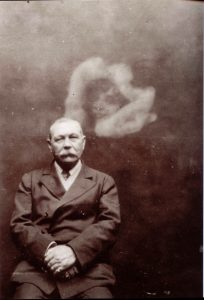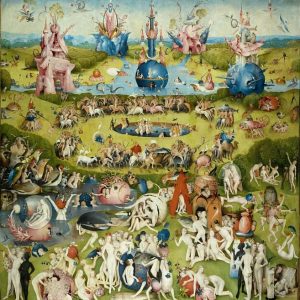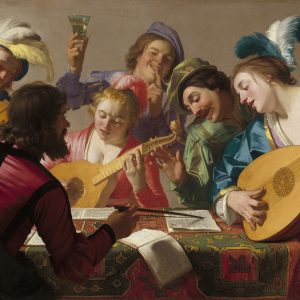
VAST – Values Across Space and Time é um projeto de investigação europeu H2020 (Grant Agreement No 101004949) que visa percecionar valores (morais) e investigar a transformação de valores europeus fundamentais, incluindo a liberdade, democracia, igualdade, Estado de direito, tolerância, diálogo, dignidade, através do espaço e do tempo. Com base na análise e sensibilização sobre valores morais, o projeto quer contribuir para o discurso público sobre valores e compreender como os mesmos são percebidos por diferentes públicos.
O projeto tem como objetivos:
A) investigar as coleções existentes de bens imateriais (expressos em diferentes lugares e em momentos significativos da história europeia) e traçar e interligar os valores emergentes nos mesmos, em particular em três áreas: Teatro (centrado no antigo drama grego do século VI a.C.), Ciência (centrado na Revolução Científica e nos documentos de filosofia natural do século XVII) e Folclore (centrado nos contos folclóricos/contos de fadas do século XIX);
B) recolher, digitalizar e estudar como estes valores (encontrados nas narrativas) são comunicados (implícita ou explicitamente) para vários públicos;
C) recolher e digitalizar as experiências dos públicos que são destinatários destas mensagens, como espetadores de teatro, visitantes de museus e alunos/estudantes que participam em atividades educativas.
O projeto aspira a trazer os valores europeus para a vanguarda, utilizando tecnologias de ponta na criação de uma plataforma digital para facilitar a criação de conhecimento continuamente atualizado, combinando a narração de histórias com o crowdsourcing. Através desta plataforma, o projeto ajudará as indústrias culturais e artísticas a reutilizar e redirecionar este material melhorando as suas abordagens de comunicação e a revisitar os valores morais no contexto da sociedade moderna.
Através de técnicas avançadas e ferramentas digitais, o projeto estudará como o significado de valores específicos foi expresso, transformado e apropriado através do tempo, utilizando metodologias e ferramentas tais como ferramentas de anotação, análise de conteúdos, entrevistas, questionários, atividades educativas, etc. O conteúdo, a ser recolhido e digitalizado, será fornecido por académicos, investigadores e profissionais, bem como por um público mais vasto, tais como artistas, curadores, especialistas em contos, espetadores, visitantes de museus, estudantes e o público em geral.
O projeto integra 4 investigadores pós-doc (Alba Morollon-Diaz Faes, Carla Murteira, Diogo Marques e Natasza Marrouch). A equipa é responsável pela elaboração de vários relatórios e pelo desenvolvimento de metodologias de análise textual, histórica e cultural, a serem utilizadas por todos os parceiros do projeto. Para além disso, foram recolhidos e selecionados contos para posterior análise comparada com recurso à ferramenta de anotação criada pelos investigadores e aplicada a vários materiais. Em 2021 e 2022 a equipa apresentou comunicações em eventos internacionais e submeteu papers científicos para publicação em revistas de referência.
Com início em 2019 e término em 2023, o projeto VAST é um consórcio internacional entre oito parceiros de cinco países: o Centro Nacional de Investigação Científica Demokritos (Grécia), Università degli Studi di Milano (Itália), Universidade Nacional e Kapodistrian de Atenas (Grécia), Universidade NOVA de Lisboa (Portugal), Fairytale Museum (Chipre), Semantika (Eslovénia), Museo Galileo (Itália) e o Festival Atenas & Epidaurus (Grécia). A participação portuguesa é liderada pela investigadora Sara Silva.
No âmbito do projeto já se realizaram as seguintes atividades:
A) testes e questionários online;
B) participação de Diogo Marques na Conferência e Festival Internacional de Literatura Electrónica (junho, 2022);
C) Participação de Sara Silva em “Letra a Letra – Jornadas da Literatura Oral e Tradicional” (junho, 2022);
D) Participação de Sara Silva na International Society for Folk Narrative Research (ISFNR) Interim Conference (julho, 2022);
D) Primeira reunião plenária presencial do VAST (julho, 2022).
Para o futuro prevê-se:
A) Organização de cursos no âmbito da Escola de Verão NOVA FCSH;
B) Participação de Alba Faes no congresso “Return to Animality: theoretical perspectives, cultural approaches and artistic manifestations”;
C) Estudo experimental com biossensores;
D) Publicação de um paper no âmbito do projeto Odeuropa.
Bibliografia recomendada:
Ursula von der Leyen, “A Union that strives for more My agenda for Europe”, 2019 – EU President’s political guidelines.
The EU values: https://ec.europa.eu/component-library/eu/about/eu-values/.
Joe Edelman, “Human Values: A Quick Primer”, 2018.
Schwartz, Shalom. (1992). Universals in the Content and Structure of Values: Theoretical Advances and Empirical Tests in 20 Countries. 10.1016/S0065-2601(08)60281-6.
Research for CULT Committee – Teaching common values in Europe, 2017.
Promoting citizenship and the common values of freedom, tolerance and non-discrimination through education, 2017.
Council Recommendation on Common values, Inclusive Education and the European Dimension of Teaching, 22 May 2018.
Tangible and intangible Cultural Heritage, 2014.
UNESCO (2003) Convention for the safeguarding of the intangible Cultural Heritage. Paris: UNESCO.
UNESCO (n.d.) Guidelines for the Establishment of National “Living Human Treasures” Systems. Paris: UNESCO.
Henry, John, The Scientific Revolution and the Origins of Modern Science, New York: Palgrave, 2002.
Harrison, Peter, The Territories of Science and Religion, Chicago: University of Chicago Press, 2015.
Daston, Lorraine, “Attention and the Values of Nature in the Enlightenment”, in The Moral Authority of Nature, edited by Lorraine Daston and Fernando Vidal, Chicago: University of Chicago Press, 2004.
DARIAH: https://www.dariah.eu/
CLARIN ERIC: https://www.clarin.eu/
Europeana: https://www.europeana.eu/portal/
PARTHENOS: http://www.parthenos-project.eu/
Europeana Data Model (EDM): https://pro.europeana.eu/resources/standardization-tools/edm-documentation
European Commission Report on Bringing Europe’s Cultural Heritage Online, July 2016, Progress report 2013-2015, page 43.
Gottschall, J. (2012). The Storytelling Animal: How Stories Make Us Human. Boston: Houghton Mifflin Harcourt.
CIDOC CRM: http://www.cidoc-crm.org/.
Barthes, Roland. Camera Lucida New York: Hill and Wang, 1981.
Ricoeur, P. (1967). Husserl: An analysis of his phenomenology. Northwestern University Press.
Graham, J. and Jonathan H. “Sacred values and evil adversaries: A moral foundations approach”, APS, 2012.
Uther, H-J. Types of International Folktales: Classification and Bibliography, Helsinki: ASF, 2004.
Propp, Vladimir. Morphology of the Folktale. Austin: Texas UP, 1968.
Boyd, R. and P. Richerson. “Culture and the Evolution of Human Cooperation” Philosophical Transactions of the Royal Society (B), 2009.
Greene, J. et al. “The neural bases of cognitive conflict and control in moral judgment”. G. Neuron, Oct 14;44(2):389-400, 2004.
Haidt, J. and Joseph, C. ‘The Moral Mind: How Five Sets of Innate Intuitions Guide the Development of Many Culture-specific Virtues, and Perhaps even Modules”. The Innate Mind, 3: 367–392, 2007.
Hauser, M. Moral Minds: How Nature Designed Our Universal Sense of Right and Wrong, NY: Harper Collins, 2006.
Johnson, D. ‘Transportation into a Story Increases Empathy, Prosocial Behavior, and Perceptual Bias Toward Fearful Expressions”. Personality and Individual Differences, 52(2): 150–155, 2012.
Joyce, R. The Evolution of Morality. MIT Press, 2006.
Veugelers, W. De Groot I. & Stolk V.(2017). Research for cult committee–Teaching common values in Europe. Brussels: European Parliament, Policy Department for Structural and Cohesion Policy.
Scaltsas, T. (2018). Extended and Embodied Values and Ideas. Aristotle-Contemporary Perspectives on his Thought: On the 2400th Anniversary of Aristotle’s Birth, 167.
Kahneman, D., & Tversky, A. (2013). Choices, values, and frames. In Handbook of the fundamentals of financial decision making: Part I (pp. 269-278).
Hitlin, S., & Piliavin, J. A. (2004). Values: Reviving a dormant concept. Annu. Rev. Sociol., 30, 359-393.
Petersen, M. B., Slothuus, R., Stubager, R., & Togeby, L. (2011). Deservingness versus values in public opinion on welfare: The automaticity of the deservingness heuristic. European Journal of Political Research, 50(1), 24-52.
Rokeach, M. (1967). Value Survey Sunnyvale. California. l-lalgren Tests.
Sherif M. 1936. The Psychology of Social Norms. New York/London: Harper.
European Values Study: https://europeanvaluesstudy.eu/.
World Values Survey http://www.worldvaluessurvey.org/wvs.jsp.
Sole, D. (2002). Sharing knowledge through storytelling. Learning Innovations Laboratories, Harvard Graduate School of Education, LILA skinny, 31402.
Haigh, C., & Hardy, P. (2011). Tell me a story—a conceptual exploration of storytelling in healthcare education. Nurse education today, 31(4), 408-411.
Biggs, J.B. (1989), “Approaches to the enhancement of tertiary teaching”, Higher Education Research and Development, Vol. 8 No. 1, pp. 7‐25.
Abrahamson, C. E. (1998). Storytelling as a pedagogical tool in higher education. Education, 118(3), 440-452.
Bergman, P. (1999). “Storytelling as a teaching tool”. Clinical excellence for nurse practitioners: the international journal of NPACE, 3(3), 154-157.
Davidhizar, R., & Lonser, G. (2003). Storytelling as a teaching technique. Nurse Educator, 28(5), 217-221.
Sugathan, S. K., & Kalid, K. S. (2009, November). An exploratory study of storytelling approach as an instructional tool from educators’ perspective. In 2009 International Conference on Computer Technology and Development (Vol. 2, pp. 480-483). IEEE.
Caminotti, E., & Gray, J. (2012). “The effectiveness of storytelling on adult learning”. Journal of Workplace Learning.
Robin, B. R. (2015). “The effective uses of digital storytelling as a teaching and learning tool”. Handbook of research on teaching literacy through the communicative and visual arts, 2, 429-440.
Barrett, H. (2006, March). “Researching and evaluating digital storytelling as a deep learning tool”. In Society for information technology & teacher education international conference (pp. 647-654). Association for the Advancement of Computing in Education (AACE).
Alismail, H. A. (2015). “Integrate Digital Storytelling in Education”. Journal of Education and Practice, 6(9), 126-129.
Sarıca, H. Ç., & Usluel, Y. K. (2016). The effect of digital storytelling on visual memory and writing skills. Computers & Education, 94, 298-309.
Engles, K., Hale, A., & Archambault, L. (2018, October). Digital Storytelling: A Communication Tool and Method for Global Education. In E-Learn: World Conference on E-Learning in Corporate, Government, Healthcare, and Higher Education (pp. 666-669). Association for the Advancement of Computing in Education (AACE).
Liguori, A., & Bakewell, L. (2019). “Digital storytelling in cultural and heritage education: A pilot study as part of the ‘DICHE’project”. Studi avanzati di educazione museale. Lezioni Advanced Studies in Museum Education. Lectures, 63.
DiBlasio, M., & DiBlasio, R. (1983). “Constructing a cultural context through museum storytelling”. Roundtable Reports, 8(3), 7-9.
Bedford, L. (2001). “Storytelling: The real work of museums”. Curator: the museum journal, 44(1), 27-34.
Taylor, E. W., & Neill, A. C. (2008). Museum education: A nonformal education perspective. Journal of Museum Education, 33(1), 23-32.
Stogner, M. B. (2011). “Communicating culture in the 21st century: The power of media-enhanced immersive storytelling”. Journal of Museum Education, 36(2), 189-198.
Hensel, W. A., & Rasco, T. L. (1992). “Storytelling as a method for teaching values and attitudes”. Academic medicine: journal of the Association of American Medical Colleges, 67(8), 500-504.
Kilpatrick, W. (1997). “Storytelling and Virtue”. Social Studies Review, 37(1), 33-35.
Evans, B. C., & Severtsen, B. M. (2001). “Storytelling as cultural assessment”. Nursing and Health Care Perspectives, 22(4), 180-180.
Rahim, H., & Rahiem, M. D. H. (2012). “The use of stories as moral education for young children”. International Journal of Social Science and Humanity, 2(6), 454.
Grammatas T, 2020. Human values and theater.
Ting-Hao Kenneth Huang, Francis Ferraro, Nasrin Mostafazadeh, Ishan Misra, Aishwarya Agrawal, Jacob Devlin, Ross Girshick, Xiaodong He, Pushmeet Kohli, Dhruv Batra, C. Lawrence Zitnick, Devi Parikh, Lucy Vanderwende, Michel Galley, Margaret Mitchell, “Visual Storytelling”. In Proceedings of the 2016 Conference of the North American Chapter of the Association for Computational Linguistics: Human Language Technologies (NAACL 2016), pp. 1233–1239, June 2016.
Kenan Malik, “The Quest for a Moral Compass, A Global History of Ethics.”, 2014.
FAIR Guiding Principles for scientific data management and stewardship, 2016.
White Paper on Artificial Intelligence, European Commission, 2020.
Eurostat, Culture statistics 2016 edition.
UNWTO Publications, Tourism and the Sustainable Development Goals – Journey to 2030, 2017.
Alexander Osterwalder, Yves Pigneur: Business Model Generation: A Handbook for Visionaries, Game Changers, and Challengers Paperback – July 13, 2010.
Tríptico do projeto aqui.




